An Authoritative Ranking of 60 Horror Franchises, From Halloween to Puppet Master
Movies Lists horror movies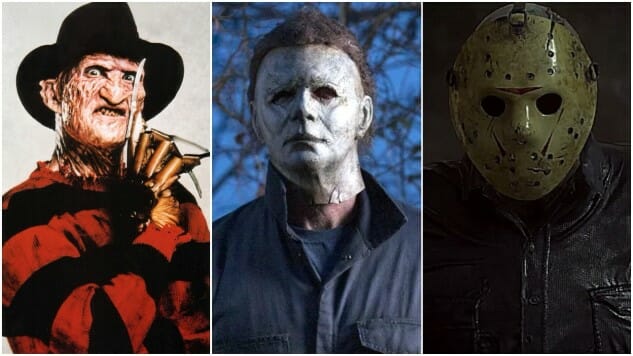
Ranking the greatest films in horror history can be a tough assignment. Weighing The Exorcist against The Shining? Psycho against Halloween? These are the stuff of post-movie diner argument legend. But that difficulty level is nothing in comparison with the punishing task of trying to rank horror franchises against one another. Take The Exorcist, for instance. The original is obviously one of the most frightening and unforgettable horror films ever made—we couldn’t deny it the #1 spot when we put together our own list of the 100 best horror films of all time. But The Exorcist is also part of a five-film franchise; one that includes the likes of Exorcist II: The Heretic, Exorcist: The Beginning and Dominion: Prequel to the Exorcist. Given those anchors around its neck, even having the original Exorcist in its fold doesn’t necessarily guarantee the franchise as a whole a high spot on this list.
Think, then, of each franchises’ placement on this list as something of an “average quality” of all entries in the series. Which horror franchise has the most quality films, or the highest average quality? That’s what we’re trying to find out.
Here are 60 horror franchises, ranked:
Rules of This Ranking
— This is a ranking of horror series with four or more entries. Why four? Well, it feels more or less like the point where a horror franchise first starts to have trouble justifying its existence, beyond “to make a quick buck.”
— By and large, we didn’t include single TV movie entries within what are otherwise theatrical or direct-to-video series.
— An exception was made for film series that are EXCLUSIVELY TV movies, from start to finish, or series that had an initial theatrical film and then became solely TV movies afterward.
60. Silent Night, Deadly Night
First entry: Silent Night, Deadly Night (1984)
Latest entry: Silent Night (2012)
Total entries: 6

The original Silent Night, Deadly Night is a pretty run-of-the-mill slasher film that only really attracted attention at the time of its release for the Christmas setting and for having the gall to put its killer in a Santa Claus costume. From there, the mildly successful original paved the way for countless sequels with absurd names like Silent Night, Deadly Night 4: Initiation and Silent Night, Deadly Night 5: The Toy Maker, only remaining active because of the built-in holiday marketability. It received a zero-budget semi-remake in 2012 that was just called Silent Night, but its greatest contribution to the internet lexicon is the incredibly bad performances in Part 2, and the “GARBAGE DAY!” scene in particular.
59. Carnosaur
First entry: Carnosaur (1993)
Latest entry: The Eden Formula (2006)
Total entries: 5

Look, we love Roger Corman to death around here, but if you let Roger Corman produce a straight-to-video Jurassic Park rip-off in the same year that Jurassic Park is released, Carnosaur is the kind of thing you get. This series was just cheap exploitation, even by Cormanesque standards, feeding into such sequels as Carnosaur 3: Primal Species and the fourth, which was just called Raptor. The most galling thing, though? The 2006 Sci Fi Channel film The Eden Formula actually re-used the (terrible even then) effects from 1993’s Carnosaur, 13 years later. Talk about desperation.
58. The Amityville Horror
First entry: The Amityville Horror (1979)
Latest entry: The Amityville Murders (2018)
Total entries: 10
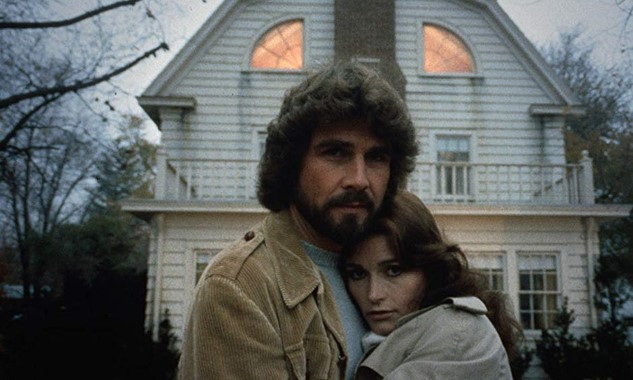
Few series can boast more pointless and indistinguishable sequels than The Amityville Horror, which has 10 in the main series chronology alone. If we expand that to all of the unauthorized films with “Amityville” in the title? Then it becomes a shocking 21 movies to date. Even the original Amityville Horror in 1979 is barely more than a standard haunted house yarn, more “recognizable name” than classic of the genre. Who are the people continuing to watch films like Amityville: The Awakening, Amityville Prison or Amityville Exorcism, all of which were released in 2017? Do these desperate horror fans really walk among us?
57. Killjoy
First entry: Killjoy (2000)
Latest entry: Killjoy’s Psycho Circus (2016)
Total entries: 5
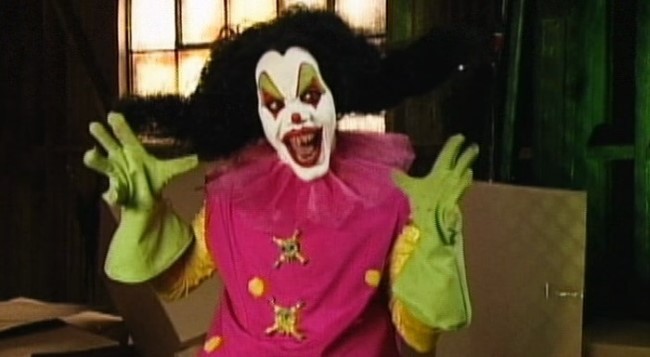
If you ever find yourself watching a bad movie on TV and question why you’d even bother with such a piece of trash, you can always comfort yourself by saying “Well, at least I’m not actively seeking out Charles Band horror franchises.” Because when you watch an entire series like Killjoy, it’s only because you’ve run out of literally everything else. Every scene in every entry of the series plays like a high school stage production of Stephen King’s It, and the production values are low—like, we’re talking “Troma low” here. And yet, take note: Even a series as pathetic as this one can still manage to attract a following significant enough that there are actually people leaving angry comments on trailers for Killyjoy sequels, complaining about the switch to a different actor in the title role after the initial entry. There are people in this world who deeply care about Killjoy. We are clearly doomed as a species.
56. Sharknado
First entry: Sharknado (2013)
Latest entry: The Last Sharknado: It’s About Time (2018)
Total entries: 6
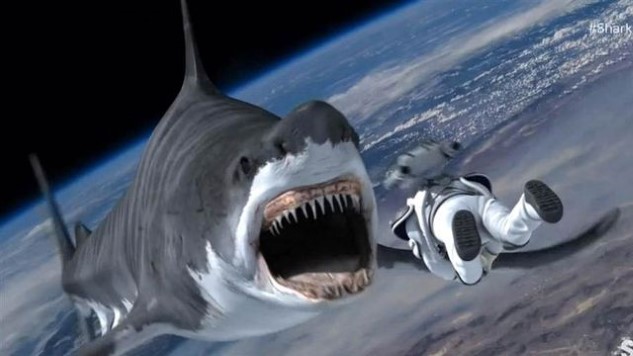
People are quick to dump on the Sharknado series, and it does deserve some level of dumping, but these were never films that were making an earnest attempt at greatness. Bad movie geeks deride the series as being “purposefully bad” and thus difficult to enjoy even ironically, and they’re mostly correct—with the important exception of the first entry, which is cheap enough and bungled enough to be legitimately bad (and thus funny) along with purposefully bad. The sequels, though … lord, what a slog they turned into. I ultimately reviewed every single one of them for Paste, so take it from a guy who knows. It wasn’t long before this series was just beating a dead shark.
55. Children of the Corn
First entry: Children of the Corn (1984)
Latest entry: Children of the Corn: Runaway (2018)
Total entries: 10

I run in some pretty geeky horror circles, and yet I’m fairly certain that I’ve never spoken with anyone who has watched a single film from the back half of the Children of the Corn series’ unbelievable TEN ENTRIES. Who are these people, getting excited about new entries in the series as they dropped in 2001, 2009, 2011 and 2018? Even the original is hardly one of Stephen King’s more interesting or enduring works—you’ve got to wonder how he feels about the fact that his story about wicked children in rural America somehow managed to get adaptations into the double digits. The fact that Children of the Corn got a pretty decent South Park parody was already more than it really deserved. Bonus points, though, for some of the uniquely silly subtitles in this franchise, including Children of the Corn III: Urban Harvest and Children of the Corn 666: Isaac’s Return.
54. Resident Evil
First entry: Resident Evil (2002)
Latest entry: Resident Evil: The Final Chapter (2016)
Total entries: 6

The first Resident Evil merely seemed to represent a paycheck for director Paul W.S. Anderson, as he displayed no interest in accurately adapting the classic survival horror videogame series. The remaining five films? Well, you could argue that they were just made out of pure nepotism, to exist as star vehicles for the not-particularly-in-demand Milla Jovovich, who Anderson married after directing her in the first—he also cast her to star in his ill-fated Three Musketeers in 2011. Regardless, these films are the height of big budget soullessness and entropy, with each chapter ending in the most unsatisfying manner imaginable, or leading directly into the next cash-grabbing installment. Together, they have the continuity of a large wheel of Swiss cheese. Read our much-longer dissection of this permanently undead franchise right here.
53. Underworld
First entry: Underworld (2003)
Latest entry: Underworld: Blood Wars (2016)
Total entries: 5
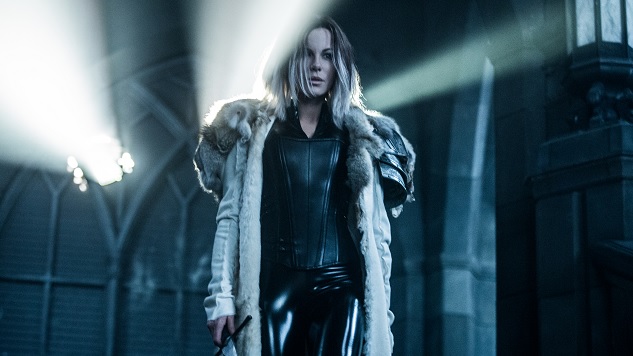
It’s fitting that Underworld be cozied up right next to Resident Evil, because these two series have a shocking amount in common. Both exist in the same time frame. Both are very light on true “horror” elements, and are essentially gaudy, style-heavy action movies with a faux horror glaze. Both are cash cow star vehicles for former A-list actresses (Milla Jovovich, Kate Beckinsale) who aren’t getting cast in mainstream film much anymore. Both are filled to the brim with Matrix-era rap-rock and nu metal, and have somehow refused to age or modernize. Both are creatively barren wastes of time, although Underworld deserves special scorn for continuing to influence the fashion choices of Hot Topic customers to this day.
52. Lake Placid
First entry: Lake Placid (1999)
Latest entry: Lake Placid: Legacy (2018)
Total entries: 6
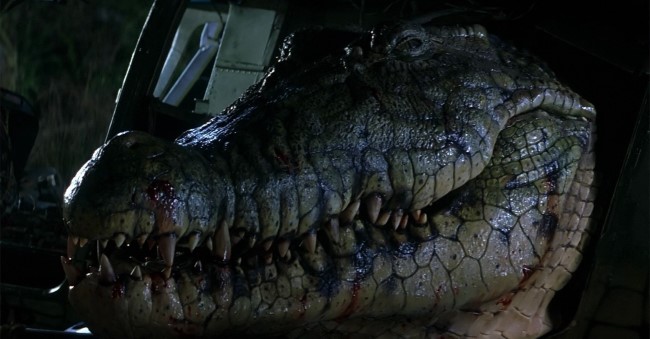
You always know when you’re looking at a film series with a lot of potential when it has an entry subtitled as “The Final Chapter,” and then several more films afterward. With the Lake Placid series, it’s basically a slide straight down into a pit full of crocodiles. The initial entry is a so-so, competently executed monster film that can boast entertaining appearances from Bill Pullman and Oliver Platt—professional enough that there’s no shame in sitting down to watch it. After the first, however, the series made its jump to TV, into the land of terrible CGI, and it’s been languishing there ever since. Noteworthy for a crossover with the Anaconda franchise in 2015 (we’ll get there in a minute), Lake Placid has been absorbed almost entirely into the modern Asylum-style ultra-cheap monster genre. Meanwhile, if you want to watch a halfway decent killer crocodile movie, check out the 2007 Australian horror film Rogue.
51. Piranha
First entry: Piranha (1978)
Latest entry: Piranha 3DD (2012)
Total entries: 5
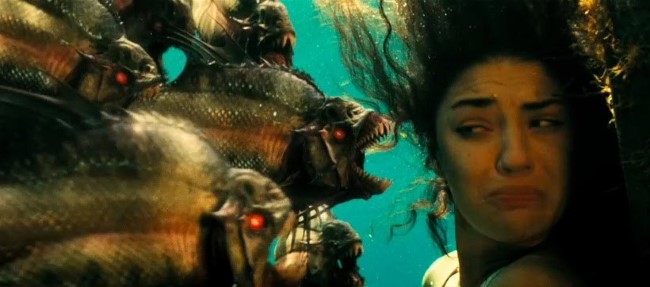
Steven Spielberg once called Joe Dante’s original Piranha “the best of the Jaws ripoffs,” but that was pretty damn faint praise, considering it was going up against the likes of Grizzly or The Last Shark. The Piranha series is a unique one, in the sense that it gave us several films from well-known directors—1981’s Piranha II: The Spawning being so bad that director James Cameron typically claims his first feature film to have been The Terminator, despite the fact that he made it three years later. The modern Piranha remakes, meanwhile, are on the insufferable side, being theatrical sex comedies for an age when that genre no longer seems at all necessary. You want to see some porn stars? The internet will provide. Not even appearances from (a very sleepy looking) Christopher Lloyd can inject them with a little levity.
50. Anaconda
First entry: Anaconda (1997)
Latest entry: Lake Placid vs. Anaconda (2015)
Total entries: 5

Oh look, it’s Anaconda, the sexy older sister of Lake Placid. Having one fewer film in the series actually helps it score ever-so-slightly better than the crocodile franchise—plus, don’t anacondas just sound more exotic somehow? The first film—the one with Jennifer Lopez, Ice Cube, Owen Wilson and Jon Voight—is a gloriously stupid little B-movie that somehow managed to get a major studio budget, and it actually might be a bit better than you remember, terrible CGI notwithstanding. The rest of the series dives ever deeper down the cheap CGI hole, reducing a big-budget thriller to half-hearted titillation. It’s only natural that both this series and Lake Placid ultimately ended up in the same bargain bin when they crossed paths in 2015.
49. Species
First entry: Species (1995)
Latest entry: Species: The Awakening (2007)
Total entries: 4
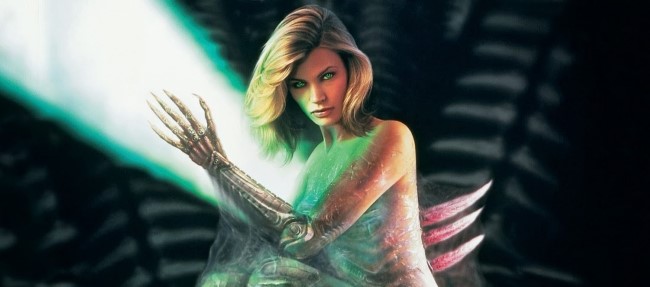
You can say this for Species—at least the first three films of the series actually feel like a proper trilogy, and maintain a modicum of internal consistency. That’s mostly thanks to star Natasha Henstridge, who appears in all three as first Sil and then Eve, various forms of the same human/alien hybrid. The series was marketed almost entirely on its star’s sex appeal, and it’s a little cringey throughout as a result, but the FX weren’t half bad, at least before the budget went downhill in later installments. Certainly, the alien sex is better than say, Galaxy of Terror. The Species franchise also highlights our point of choosing “four or more entries” as the qualification for this list—the series manages to hold its head up (sort of) through three films, but the fourth is your classic “let’s cash in one last time on this brand” effort, being without Henstridge and having essentially nothing to do with any of the previous movies in the series. It was clearly a potboiler for everyone involved.
48. The Prophecy
First entry: The Prophecy (1995)
Latest entry: The Prophecy: Forsaken (2005)
Total entries: 5

One can only assume that Christopher Walken must have been having fun (or been very well paid) when he was making The Prophecy movies, because he went on to star in three of them as the fallen archangel Gabriel, ever attempting to stoke the fires of the war between heaven and hell. Are any of these films particularly great? No, not really—the strength of The Prophecy movies tend to be in individual performances rather than narrative coherence. Case in point: Viggo Mortensen, who is absolutely mesmerizing as Lucifer in the first installment, before sadly not continuing into the sequels. Walken eventually gets left behind, and the quality unsurprisingly dips, but there are still individual performances of merit—especially Hellraiser’s own Doug Bradley as the scheming demon Belial in the fourth installment.
47. Sleepaway Camp
First entry: Sleepaway Camp (1983)
Latest entry: Return to Sleepaway Camp (2008)
Total entries: 5
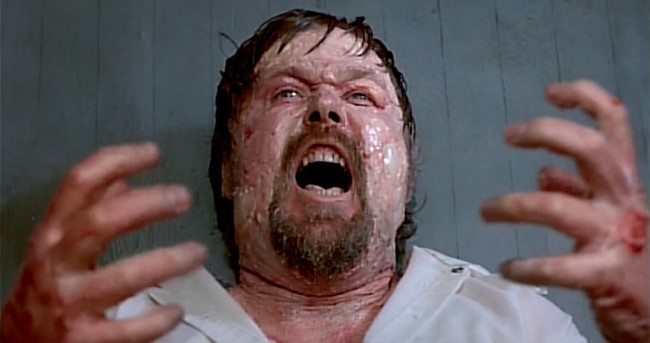
Who doesn’t love the first Sleepaway Camp? Campy, perverted and occasionally quite gruesome, it’s one of the more colorfully silly entries in the golden age of slashers, capped off by one of the most legitimately shocking slasher endings of all time. Standing alone, it easily made our list of the 50 best slashers of all time. As part of a series, though? Well, suffice to say, the likes of Unhappy Campers aren’t in the same league. The belated sequels in the late ’80s are hurting badly from the absence of Felissa Rose, who played ingenue Angela in the first installment, and also from the decision to push them in a direction that was meant to be satirical of the entire slasher genre—something they don’t do with much success. Still, Rose’s return to the role some 25 years later, in Return to Sleepaway Camp, is good for a laugh. You’re best off just watching the first, though.
46. Wishmaster
First entry: Wishmaster (1997)
Latest entry: Wishmaster: The Prophecy Fulfilled (2002)
Total entries: 4
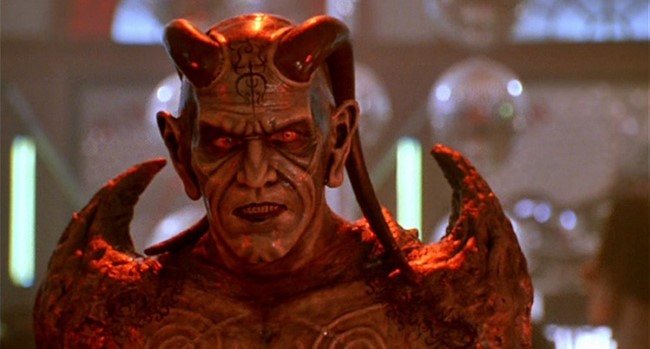
Ah yes, Wishmaster—the type of film franchise that seemed to simply spawn on the damp shelves of your local Blockbuster Video in the late ’90s, right along with the similarly titled Puppet Master. What to call it, exactly? The Wishmaster films certainly draw from the slasher playbook (and feature many cameos from famous slasher stars), but they’re not quite slashers in the literal sense—they’re more like the Leprechaun series, centered around a magnetic lead villain and a bunch of idiots who all deserve to die for one reason or another. Unfortunately, you can only really recommend the first Wishmaster today, primarily just to see how many recognizable horror faces director Robert Kurtzman had in his rolodex. From Robert Englund to Tony Todd to Kane Hodder, they all seem to be there.
45. Ghoulies
First entry: Ghoulies (1985)
Latest entry: Ghoulies IV (1994)
Total entries: 4
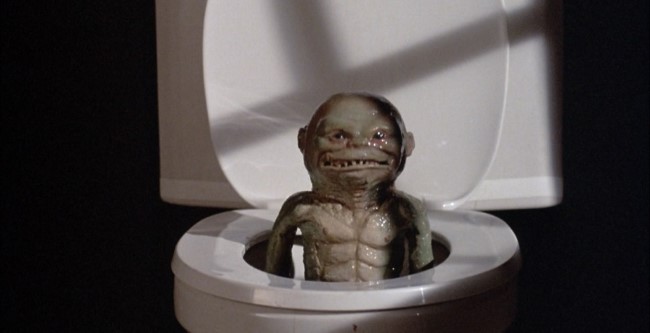
When you begin and end as a shoestring budget series, it’s a little bit harder to see a degradation over time, isn’t it? That’s something that the likes of Ghoulies has going for it—these films were never “A” productions to begin with, so the drop-off when going direct-to-video is barely noticeable. To look at the first film in the series, you’d think for sure that it was a Gremlins rip off, but the strange truth of the matter is that the two films were actually in production at the same time—Ghoulies just ran short of funding and took longer to finish, which let Joe Dante’s Gremlins reach theaters first. There’s nothing particularly interesting about the series, other than the shlock classic poster and VHS cover with the Ghoulie popping up out of a toilet—a signature Charles Band visual touch if there ever was one. But you’re more likely to laugh than to wretch while watching the likes of Ghoulies III: Ghoulies Go to College, so that earns the series a few points. Bonus: The first entry was actually the feature film debut of longtime Law & Order: SVU star Mariska Hargitay.
44. Critters
First entry: Critters (1986)
Latest entry: Critters 4 (1992)
Total entries: 4

Oh, and speaking of series that gave unexpected first appearances to big names, remember when Leonardo DiCaprio made his feature film debut in Critters 3? If Ghoulies could be described as “not quite” a Gremlins rip off, then Critters qualifies as definitely a Gremlins rip off—perhaps the best of them, which still isn’t saying much. The thing this series had going for it was the silliness of the Critter designs themselves, which made them look like large puff balls covered in spines and sharp teeth—malevolent, toothy versions of the Tribbles from Stark Trek, more or less. There’s a certain joy in watching them be thrown by a stagehand onto unsuspecting extras, but the FX themselves are also quite charming, thanks largely to the work of the Chiodo brothers, who later went on to produce an ’80s FX classic in the form of Killer Klowns From Outer Space.
43. Hatchet
First entry: Hatchet (2007)
Latest entry: Victor Crowley (2017)
Total entries: 4
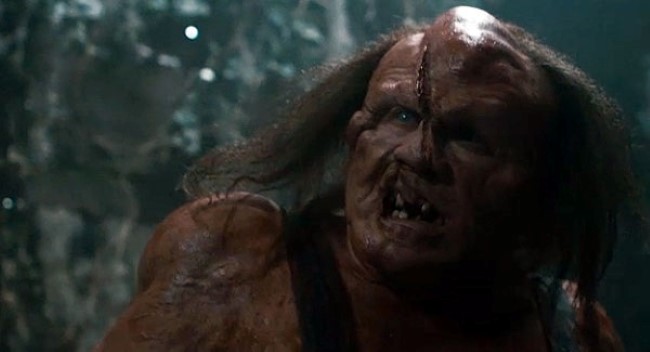
Modern homages to classic slasher formula have a tendency to wear their hearts (and influences) on their sleeves a bit too proudly, and that perhaps is what kept Hatchet from being quite as memorable as the films it’s aping. Still, the swampy series about deformed and seemingly indestructible killer Victor Crowley has its moments, from the admittedly great gore effects work in most of the installments, to the casting of former Halloween star Danielle Harris as the lead in Hatchet 2. None of these entries aspire to much; they just want to be mindless entertainment that reminds you of something you saw in the ’80s, probably in a Friday the 13th movie. In that, they’re pretty successful, if not always pretty to look at.
42. Pumpkinhead
First entry: Pumpkinhead (1988)
Latest entry: Pumpkinhead: Blood Feud (2007)
Total entries: 4
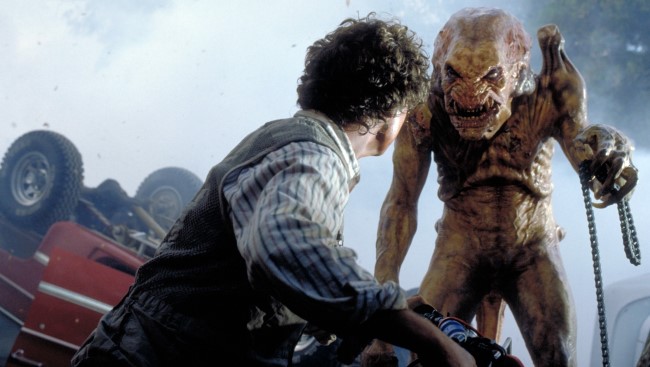
The first Pumpkinhead can boast a few interesting distinctions. First, it’s one of the few films to actually be directed by legendary FX technician and designer Stan Winston, so the creature design and costume look pretty amazing as a result. Second, it happened to star Lance Henriksen, back at a time when that could reasonably be described as a “feature” in a film, only two years removed from Aliens. Several of the other installments in the series also feature Henriksen, but … it’s a lot like saying that you have Malcolm McDowell in your movie, when the year is after 2000—it just means you could scrape together his fee to appear on set for a few days. Likewise, the effects in the later Pumpkinhead films never approach the sublime design of the first.
41. Night of the Demons
First entry: Night of the Demons (1988)
Latest entry: Night of the Demons (2009)
Total entries: 4

Well, when you have one entry that is a classic of the genre, and a bunch of garbage cluttering up the rest of your franchise resume, I guess this is about where you end up on the list. The original NIght of the Demons is a classic of tacky ’80s schlock, like Return of the Living Dead without the great soundtrack (but plenty of Linnea Quigley). It’s your basic “teens go to a haunted house and everything goes to hell” premise, full of gratuitous nudity and awesome demon FX as the kids get picked off one by one. The first two sequels continue the story to much less effect, while the last entry is a half-hearted reboot with none of the original’s visual flair—it’s a spiritual cousin to the equally lazy Black Christmas remake. Still, you could throw most of these films on during a Halloween party and they would at least look the part.
40. “Blind Dead” series
First entry: Tombs of the Blind Dead (1972)
Latest entry: Night of the Seagulls (1975)
Total entries: 4

Not to be outdone by the American originals or their Italian imitators, Spanish horror directors also took a crack at zombie cinema in the ’70s, and the so-called “blind dead” series by Amando de Ossorio is by far the most notable. The title is quite literal—the zombies in this series are all blind, reanimated knights Templar, who had their eyes pecked out by birds centuries ago on the gallows. Grisly, right? Heavy on atmosphere but uniformly languid in terms of pace, these are films for zombie purists and few else, with more than a little in common with the zombie-related works of Lucio Fulci. Nice makeup effects mask a general lack of story in any of the films in the series, but if you’re a zombie completist, you need to see at least a few.
39. Hellraiser
First entry: Hellraiser (1987)
Latest entry: Hellraiser: Judgement (2018)
Total entries: 10

Goddamn, Hellraiser. Few entries on this list are more difficult to objectively rank than this one, a franchise that has two very good entries (the first two, naturally) and then a flood of direct-to-video garbage that never seems to be satiated, with each subtitle more generic than the one that preceded it. Best one? Hellraiser: Deader. Seriously, every time you think the Hellraiser series has finally run out of gas, someone scrapes together enough funding to produce another fraught, troubled, ultimately disappointing passion project, almost invariably revolving around hard-boiled detectives investigating Cenobite murders. Just look at the Wikipedia entry for this year’s Hellraiser: Judgement, which reads like it was written by the incensed director himself. And yet, Clive Barker’s original remains a hauntingly effective vision of the director’s personal obsessions with dualities such as pleasure and pain. In that sense, I guess it’s only appropriate that the Hellraiser franchise be a duality itself, between “horror classics” and “hot garbage.”
38. Universal Mummy series
First entry: The Mummy (1932)
Latest entry: Abbott and Costello Meet the Mummy (1955)
Total entries: 6
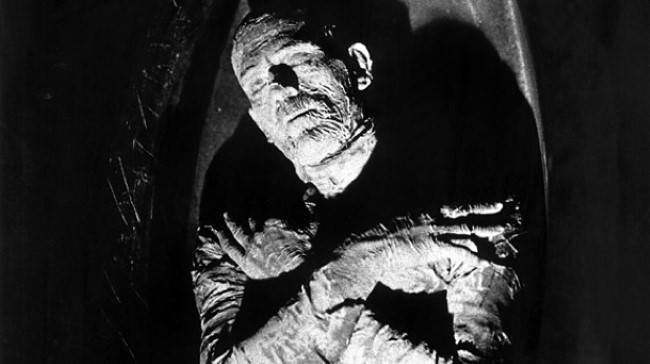
First, let’s get things straight: We’re talking only about the original Universal Monster movies featuring The Mummy here, not the Brendan Fraser remakes or the Tom Cruise remake, both of which are action-adventure films with a horror veneer. This is another case of “one great film,” followed by a bunch of lesser progeny. The original 1932 Mummy is a classic of the genre and a significantly different film from what a casual observer might expect, in the sense that it’s not a movie about a shambling, wrapped mummy strangling people, but rather a tragic love story about a doomed romance that persists across the centuries. The sequels? Those movies are definitely about shambling, wrapped mummies strangling people, and lord does that get old quickly. It’s certainly not enough to sustain four consecutive sequels with titles like The Mummy’s Hand, The Mummy’s Tomb and The Mummy’s Ghost, all of which are practically indistinguishable from one another. At least the Universal films featuring Dracula, Frankenstein and The Wolf Man have a little variety. Mummy pictures are the most formulaic of the bunch, and he’s probably the least-loved of the classic monsters as a result.
37. Puppet Master
First entry: Puppet Master (1989)
Latest entry: Puppet Master: The Littlest Reich (2018)
Total entries: 13 (!!!)
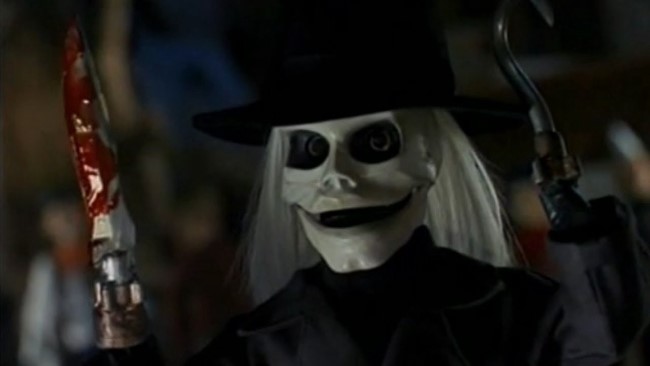
If Charles Band is essentially the patron saint of neverending low-budget horror franchises, then the Puppet Master series is the man’s magnum opus. Honestly, it’s the first thing you think of when someone says “long-running, direct-to-video horror series.” And lord, has the Puppet Master series had its ups and downs along the way. It’s been through revisions, reboots and “re-imaginings,” but somehow the core has remained intact, from the iconic puppets like “Blade” and “Jester” to Band himself, who personally returned to direct installments in 2012 and 2017. Do the stories make any kind of sense when you try to piece them together? They sure as hell don’t, but Puppet Master fans don’t seem terribly demanding as far as internal consistency is concerned. The series has seemed more or less dead at various points since 1989, but with the release of this year’s (actually well-reviewed) The Littlest Reich, fresh life has been breathed into this warhorse of a franchise once again. We can probably expect the puppets to add at least one or two more notches to their belt before all is said and done.
36. Paranormal Activity
First entry: Paranormal Activity (2007)
Latest entry: Paranormal Activity: The Ghost Dimension (2015)
Total entries: 6
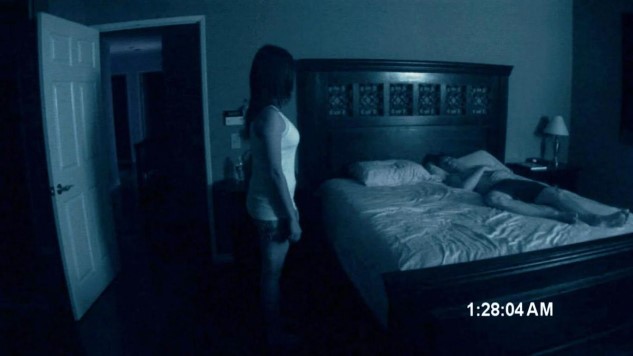
The Paranormal Activity franchise is a classic victim of its own success—as is the reputation of the most important film in that franchise, which is obviously the first. Put simply, the original Paranormal Activity is a low-budget masterpiece, a $15,000 found-footage sensation that proved considerably more effective than studio movies with 500 times more funding to work with. It’s a beautifully constructed thriller that slowly but surely ramps up the dreadful sense that anything could happen to its hapless protagonists at any moment. The sequels, on the other hand, suffered from the very studio slickness (and convoluted attempts at mythology) that the first installment never needed. They each have individually effective moments—the cacophonous kitchen scene in Paranormal Activity 3 comes to mind—but by the time that entries like The Marked Ones are trying to thread their story back into the original like the 1955 segments of Back to the Future Part II, the entire franchise ends up disappearing up its own navel. The greatest shame of it is how badly the sequels, and their huge financial success, ended up hurting modern appraisal of the original.
35. Return of the Living Dead
First entry: The Return of the Living Dead (1985)
Latest entry: Return of the Living Dead: Rave to the Grave (2005)
Total entries: 5

The original Return of the Living Dead is my favorite zombie movie of all time, so I can’t help but wish this franchise could claim a higher final ranking. Dan O’Bannon’s 1985 original was the decade’s most vital reimagining of the Romero zombie formula, benefiting from its tangential connection to the original (via John Russo), nigh-indestructible, brain-munching zombies, killer ’80s metal soundtrack, great practical effects and broad satire of 1980s teen culture. It’s an incredibly entertaining film to this day, but the ROTLD sequels just can’t measure up to the classic original. The first sequel comes closest, bringing back the recently departed James Karen as a key player, but some element of the first film’s charm is absent. Things only continue downhill from there, as ROTLD 3 plays more like a romantic drama than a proper zombie film, while the fourth and fifth entries dispense with most of the rules and continuity established in the originals and become all the more generic in the process. The dual entries in 2005 hurt this franchise’s ranking the most, coming off as uninspired cash grabs that simply wanted to prey on ’80s nostalgia.
34. The Hills Have Eyes
First entry: The Hills Have Eyes (1977)
Latest entry: The Hills Have Eyes 2 (2007)
Total entries: 4 (or 5?)
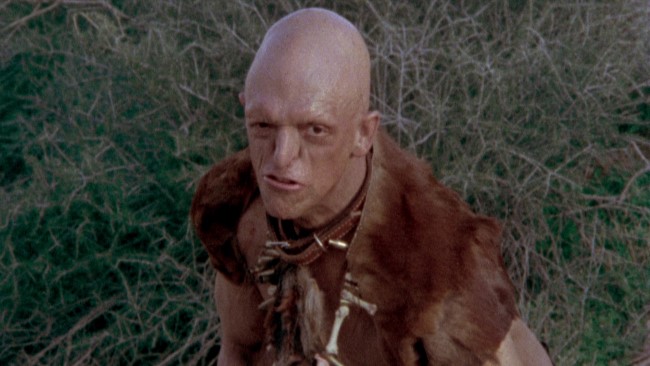
The Hills Have Eyes sort of operates like an inverse to that old rule about Star Trek sequels and relative quality: In this case, it’s the odd-numbered entries that are the quality ones, rather than the evens. Director Wes Craven’s original is a mean, misanthropic little movie that picks apart the unreality of suburban blandness, when a group of those hapless suburbanites are thrown into a life-and-death struggle against a family of desert-dwelling cannibals. The sequel to that film, although also directed by Craven, is far from the director’s best work—a movie made for a paycheck, which Craven largely disavowed. The series then got itself a quasi sequel in the form of the made-for-TV Mind Ripper, which was in some places titled The Hills Have Eyes 3, but other than being set in a desert and produced by Craven, there’s no actual connection. Finally, the pair of modern Hills Have Eyes reboot films follow a curiously similar progression as Craven’s originals: A fairly tense, very gory initial chapter that faithfully adapted Craven’s subtext, followed by an uninspired retread with less interesting characters. All in all, there are two films here of merit, and they’re both just titled The Hills Have Eyes.
33. The Purge
First entry: The Purge (2013)
Latest entry: The First Purge (2018)
Total entries: 4

The main thing that makes it difficult to evaluate The Purge is how recent the franchise still is, but it’s clear that there’s a quality gradient in its films, even as it wraps up its middling first season as a TV horror drama. It certainly gets credit for the initial concept of The Purge, a plot device so deliciously open ended and full of potential that it sounds like something Paul Verhoeven would have written in the ’80s. Its first installment sort of squanders that premise by writing a home invasion thriller that hardly needed the framework of The Purge at all to exist, while the sequels concern themselves with the sociopolitical ramifications (and roots) of The Purge to varying effect. It earns some points with the chaotic street action of The Purge: Anarchy, but by the time we get to The First Purge, the politicization of the series has become rather heavy handed and guileless, as if the writers don’t trust their audience to put two and two together.
32. Texas Chain Saw Massacre
First entry: The Texas Chain Saw Massacre (1974)
Latest entry: Leatherface (2017)
Total entries: 8
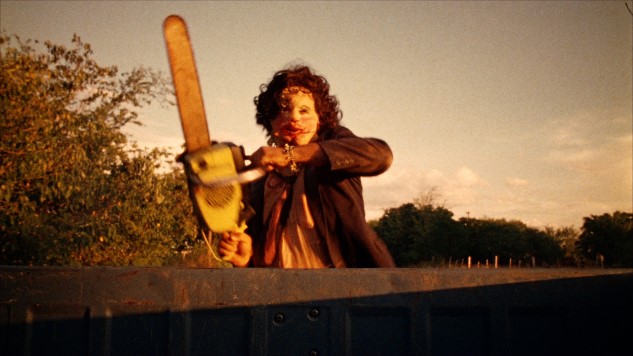
Lord, how did there get to be eight films in the Texas Chain Saw franchise? Of all the entries on this list, this is perhaps the series that least needed any kind of follow-up after Tobe Hooper’s iconic original. The final images in 1974’s Texas Chain Saw Massacre are sights seared into the mind of any horror fan—a screaming, howling Sally being driven away from the scene of the massacre while Leatherface revels and rages in the road with his chainsaw, greeting the sunset. It’s a beautiful tableaux, which is exactly the kind of thing you can’t say about any of the Texas Chain Saw sequels. That isn’t to say that some of them don’t have their merits, but they’re all very different films—even Tobe Hooper’s direct follow-up in 1986, which is more of a camp gore classic in the vein of Dead Alive than it is a true horror film, and divisive as a result. But once you get into the dregs, whether it’s Matthew McConaughey in Texas Chainsaw Massacre: The Next Generation or the entirety of the gimmick-laden Texas Chainsaw 3D, you’re about as far removed as you can get from the lo-fi vision of the original. If there was one thing we didn’t need, it was a childhood exploration of how Leatherface became Leatherface, any more than we needed to see the same thing in Rob Zombie’s Halloween.
31. Universal Dracula series
First entry: Dracula (1931)
Latest entry: Abbott and Costello Meet Frankenstein (1948)
Total entries: 5 (6 if you count the Spanish language Dracula)
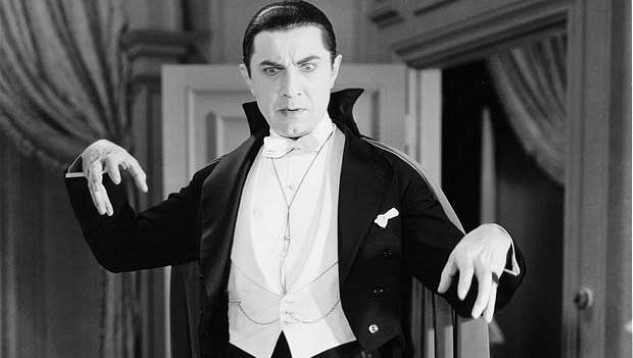
It pains me to not have Dracula, the “original” Universal Monster (he was really preceded by The Phantom of the Opera, but whatever) be higher on this list, but if you’ve seen the other installments in this series after the original 1931 Dracula, you’d be a lot more likely to understand why it’s here. For the record, the likes of Bram Stoker’s Dracula do not count here—only the Universal-produced films. In terms of evaluating the series, a few things are clear. First of all, the original Dracula is obviously a classic, cemented by Bela Lugosi’s hypnotic, charming, exotic performance as the Count, as well as classic supporting roles from Dwight Frye and Edward Van Sloan. The great shame is that Lugosi wasn’t asked to reprise the character, having it handed down to first Lon Chaney Jr. and then John Carradine in Son of Dracula, House of Frankenstein and House of Dracula—quality actors, but wrong for the part that Lugosi had made so iconic. Those films, likewise, lack the focus and atmosphere of Universal’s initial run of monster movies, being released in a time when the real-life horrors of World War II had put anything the monsters might conjure to shame. Only Abbott and Costello Meet Frankenstein manage to reclaim a little bit of Dracula’s dignity, but by the time Lugosi made his return to the character in 1948, he seemed like a shell of his former self. Lugosi should have gotten a proper sequel in the mid-’30s, but Universal was more focused on its crown jewel franchise, Frankenstein.
30. Final Destination
First entry: Final Destination (2000)
Latest entry: Final Destination 5 (2011)
Total entries: 5
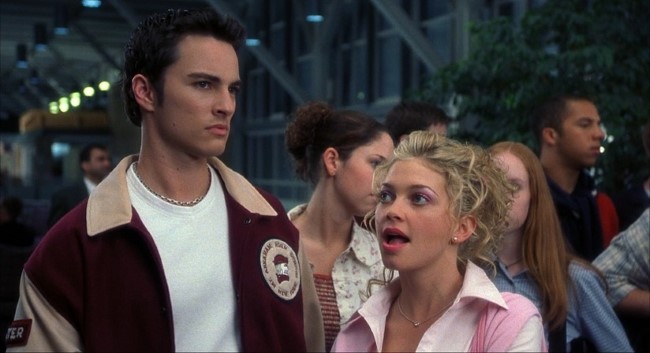
Part of the definition of a “slasher” film is that movies in the genre are structured around the kills themselves, but there is perhaps no franchise that took this to such imaginative, intensely unlikely extremes as Final Destination. Here, the deaths are the sole reason for admission—implausible, gory accidents raised to the level of an art form. The framing devices for each installment hardly matter, and are typically the same—a group of people cheated death in some way, and now death is coming for them to restore the balance of the universe. The fun is just in seeing what absurd, seemingly impossible ways people will find to get themselves killed. The series does lose some points in its fourth installment in particular, though, which dropped its numerical suffix and promised some kind of finality by calling itself THE Final Destination. There are few things in horror more pathetic than the embarrassment of going back to the numerical format in Final Destination 5 afterward, only two years later. At least the final installment (to date) made some good use of 3D in its signature kills.
29. Saw
First entry: Saw (2004)
Latest entry: Jigsaw (2017)
Total entries: 8

For better or worse, Saw is truly the horror franchise that defined the tone of the genre in the 2000s. If the ’90s were marked by their apathy toward old horrors and the birth of meta horror, then the 2000s doubled down on shock factor as a way to reel people back in. Both the original Saw and Hostel after it tested the limits of how much violence one could get away with in an “R” rating, but it was Saw that simultaneously managed to build an elaborate (and often contradictory) mythology for its killer. That’s the thing about the Saw series—it benefited from the clear-headed planning of James Wan and Leigh Whannell early on, but the continued economic viability of the movies meant that it was inevitable that things would eventually get away from them. This certainly happens in the later installments, culminating in the pretty wretched Saw 3D, as each sequel struggles to conceive ever-more overly complicated ways of inflicting death on the few surviving core characters. The final Saw entries feel grafted together from bits and pieces of rejected flesh from previous installments, but you can’t deny the way the series reshaped the American perception of (and tolerance for) brutally realistic on-screen violence.
28. Tremors
First entry: Tremors (1990)
Latest entry: Tremors: A Cold Day in Hell (2018)
Total entries: 6
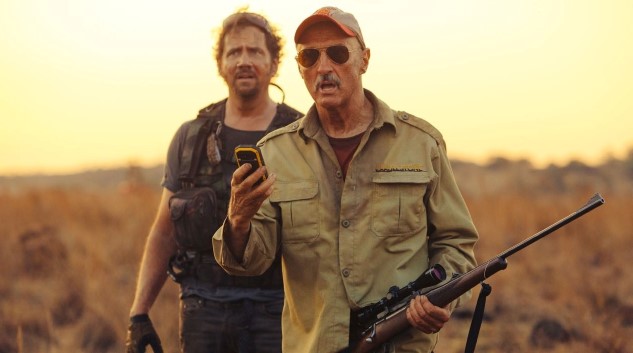
The thing that makes the Tremors franchise work so much better than it really ever should have is that it never had any pretensions to maintain. These movies were goofy from the beginning, and they manage to hold their tone fairly well, at least through the first three or four installments. From the relatively uncluttered original, through the evolution of the “graboids” into creatures that can run and even fly, they remain harmless popcorn films that only gently qualify on the “horror” front. The most valuable player is obviously the resolute Michael Gross, whose Burt Gummer character is perhaps cinema’s greatest caricature of the indefatigable doomsday prepper and professional mercenary. He appears in all but one entry in the series (Tremors 4: The Legend Begins), giving the films a baseline of continuity and at least one character you’re guaranteed to care about. And when you’re six entries into a series, that’s what you really need.
27. The Howling
First entry: The Howling (1981)
Latest entry: The Howling: Reborn (2011)
Total entries: 8

This might be an overly generous position for The Howling, given all the crummy sequels in this series, but the fact that the original is perhaps the #2 werewolf film of all time (after An American Werewolf in London) counts for a lot. It’s grim, gritty and pure, with a single-minded focus on horror and entertainment. The FX are top-notch, including some of the most agonizing-looking transformation sequences in the entire werewolf arcana. You can’t be big into werewolves as movie monsters and not have a soft spot for The Howling. Its sequels, on the other hand … well, at least The Howling II: Your Sister is a Werewolf is plenty of fun from a camp perspective. Featuring one of the most awkward performances of Christopher Lee’s career, and an absurd amount of gratuitous Sybil Danning nudity, which plays in an endless loop over the closing credits, it earns some guffaws. Woe to you if you proceed on to The Howling III: The Marsupials, though.
26. Universal Wolf Man series
First entry: The Wolf Man (1941)
Latest entry: Abbott and Costello Meet Frankenstein
Total entries: 5
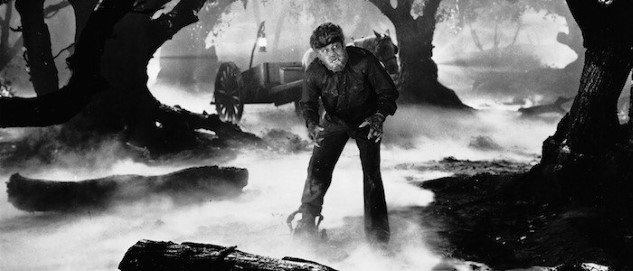
Might as well keep the werewolves together, right? The Wolf Man and Dracula share some of the same lower-quality “monster mash” films on their resumes, such as House of Frankenstein and House of Dracula, but Larry Talbot’s other films edge out The Count, who really only has 1931’s Dracula to be proud of. By contrast, Lon Chaney Jr.’s first appearance in The Wolf Man is a more complete and modern horror story than the sometimes languid Dracula, and Frankenstein Meets the Wolf Man is superior to any of the other sequels featuring Dracula, regardless of who was playing him. Larry Talbot also works better as a “franchise” character in a few ways—he has the advantage of always being portrayed by Lon Chaney Jr., and he has the overarching characterization of a world weary man who just wants to find a cure … or a way to die. Some of the monster mash sequels trip over their own continuity, ignoring the events of previous films, but the Wolf Man still has the best overall franchise of any Universal Monster series not named Frankenstein.
25. Wrong Turn
First entry: Wrong Turn (2003)
Latest entry: Wrong Turn 6: Last Resort (2014)
Total entries: 6

It’s impossible to look at the Wrong Turn series and not be reminded of the stark brutality of The Texas Chain Saw Massacre or The Hills Have Eyes, but where the former series occasionally have pretensions toward “art,” Wrong Turn entries have never concerned themselves with much of anything beyond sheer entertainment factor. It probably helps that there are fewer entries than Texas Chain Saw’s eight, but the series also scores points for its internal consistency and cohesion, even when it’s making more humorous forays in films such as series highlight Wrong Turn 2: Dead End. The majority of these films are lean, mean and darkly humorous—people stumble into the domain of these backwoods cannibals, and they get what’s coming to them. Not fancy, but competent and effective, and sprinkled with rare moments of surprising pathos. There’s something beautiful about our protagonists stumbling into a field, only to realize that it’s filled with dozens of abandoned vehicles from previous victims.
24. REC
First entry: REC (2007)
Latest entry: REC 4: Apocalypse (2014)
Total entries: 4
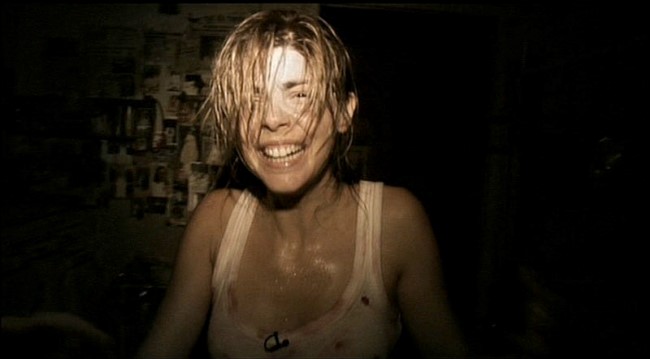
The REC series of Spanish horror movies still isn’t terribly well known in America outside of horror geek circles, but its first and second entries stand as two of the better independent films made in the post-Paranormal Activity era of found footage horror obsession. The hook here is that we’re following a TV news crew into the bowels of a run-down apartment building that has been sealed off by the government—hence the name of the subpar American remake being simply Quarantine. Inside, the news reporters discover ravening former tenants, in what first appears to be essentially a zombie movie before morphing into a series that is actually about zombie-like demonic possession. The first two films fit together perfectly, while the third ultimately proves a questionable detour, acting as a prequel while abandoning the found footage format. The fourth and final installment, likewise, feels sort of tacked on even though it brings back the central character of the first two entries—a forced attempt at a conclusion that doesn’t really answer the series’ most burning questions. Still, REC and REC 2 make for one of the best found footage double features there is.
23. Phantasm
First entry: Phantasm (1979)
Latest entry: Phantasm V: Ravager (2016)
Total entries: 5

Phantasm fans are an intense, dedicated bunch, united in their love of Tall Men and weird, flying balls with knives on them. The Phantasm series is a bit like the Hellraiser series, although it suffers from fewer unnecessary sequels than the 10 movies with Pinhead plastered on the cover. These films possess a similarly dreamy, fantasy tinged visual style, but what really helps the series as a whole is its direct continuity, wherein each film picks up exactly where the previous one left off. It’s marred somewhat by the procession of different actors portraying central characters such as Mike Pearson, but at least you’ve always got the gaunt face of Angus Scrimm as the Tall Man, the anchor around which the entire series was eventually built. Even in the cheaply made modern sequels such as Ravager, it still feels like the ongoing story and connection to previous installments give the material a lift. Credit is due to the Phantasm fans for their undying devotion to this particular franchise.
22. Predator
First entry: Predator (1987)
Latest entry: The Predator (2018)
Total entries: 6

We’re counting the crossover Alien vs. Predator movies here, but even without them, Predator still has enough films to qualify. Even if none of the installments can really measure up to the heights scaled by their xenomorph rivals, the Predator series is filled with fun diversions. There’s the steamy original, with its memorable alpha male characters and unintelligible Schwarzenegger grunting. There’s the gonzo second installment, pitting a Lethal Weapon-style Danny Glover against extraterrestrial big game hunters in the middle of an urban sprawl. And then there are the rest, which range from unremarkable action films (Predators, The Predator) to disappointingly wackadoo cash grab crossovers (AvP). The series has steadily veered in the direction of self-parody, unlike the increasingly introspective Alien movies, but perhaps some day we’ll get a true back-to-basics Predator installment. I wouldn’t bet on it, though.
21. The Omen
First entry: The Omen (1976)
Latest entry: The Omen (2006)
Total entries: 5

The Omen, like The Exorcist, is a film that is still effective today because it has a uniquely “tainted” feel—the product of a conception during the ’70s horror fascination with Satanism and demonic possession. There’s a miasma over the whole proceedings, and a feeling of impending, inescapable doom that is only reinforced by all the Final Destination-style deaths. That head being chopped off by a pane of glass? Always a classic. Truly a disturbing film at its time of release, there’s a timeless quality to evil little Damien, a malevolence that is only partly dimmed in the film’s first two sequels as he grows up. The modern remake? Well, at least it looks fine, but it’s a perfect example of a horror remake that had little reason to exist. I’d rather watch an out-of-left-field continuation of the story, ‘ala Omen IV: The Awakening, than a simple rehash of the first film’s plot. Regardless, the first three Omen movies work together as a decent Satanic triptych.
20. Poltergeist
First entry: Poltergeist (1982)
Latest entry: Poltergeist (2015)
Total entries: 4
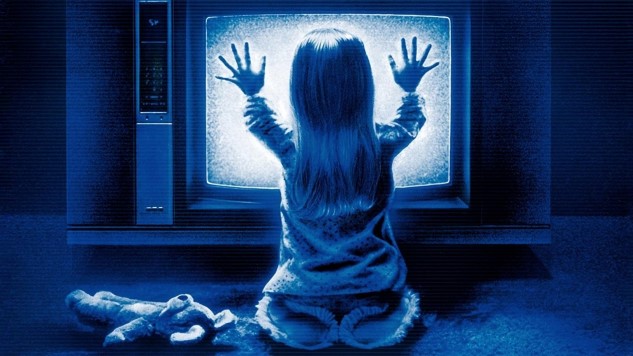
There’s probably no better haunted house movie in the ’80s than Tobe Hooper/Steven Spielberg’s beautifully shot and arranged Poltergeist, a supernatural horror story that distinguishes itself with a warmly genuine (and often quite funny) family dynamic from its opening moments. With great FX and far-above-average characters (except the oddly absent daughter), there’s a level of humanity here that most of the genre lacks. That feeling is at least partially present in the underrated Poltergeist II: The Other Side, which features one of horror’s more genuinely terrifying visages in the form of Rev. Henry Kane—actor Julian Beck was tragically wasting away from cancer during filming, which makes the character look truly ghoulish. Poltergeist III unfortunately begins to run out of steam, and the less said about the 2015 remake, the better. If a movie with Sam Rockwell in it can fairly be labeled as “boring,” then something has definitely gone wrong. Still, the all-time-classic status of the first and the relatively smaller number of sequels means the average quality level is still fairly high.
19. Leprechaun
First entry: Leprechaun (1993)
Latest entry: Leprechaun: Origins (2014)
Total entries: 7

Don’t you dare laugh at the Leprechaun, alright? Through six films of this franchise, Warwick Davis gave us one of horror’s best icons, a character fully imbued with the wit and charm of its star player. It’s his consistency that gives Leprechaun a spot in the top 20, as well as the absurd (and frequently hilarious) nature of the Leprechaun sequels. If the first film was trying at least a little bit for scares, that notion is done away with pretty much immediately, and the series is actually better for it. There are elements of camp classic in pretty much every Leprechaun film that follows, whether it’s the drinking game in Leprechaun 2 or the fact that the series seems to imply that “The Hood” is a more dangerous and vexing destination than “outer space” in Leprechaun 4. My personal pick for best of the series, though? The overlooked Leprechaun 3, which features the series’ best blend of practical effects, silly characters, Leprechaun one-liners and outrageous deaths—AND has a kid who’s turning into a were-leprechaun and craving potatoes. In fact, the only thing that really hurts the series ranking is the travesty that was WWE Studios’ Leprechaun: Origins, a dark, ugly, extremely cheap film that throws away every aspect that makes the original Warwick Davis series endearing. Here’s hoping that SyFy can improve on things when they release Leprechaun Returns in 2019, but given that the titular character can’t seem to speak legibly over the plastic fangs in his mouth, I’m not exactly optimistic.
18. Insidious
First entry: Insidious (2010)
Latest entry: Insidious: The Last Key (2018)
Total entries: 4
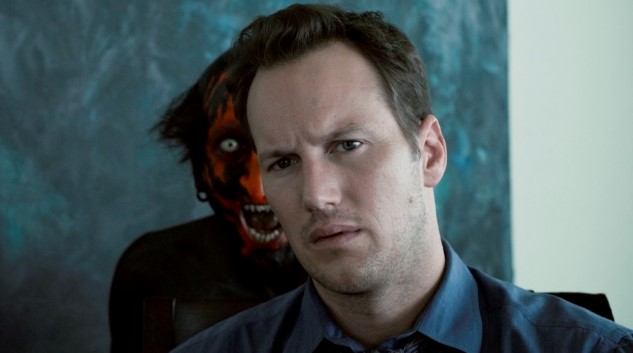
The Conjuring is probably James Wan’s flagship horror series these days, but the extended universe of Insidious isn’t far behind. The best thing about this franchise is its internal consistency and slow, steady expansion of the nature of the spiritual realm known as The Further. Its first two films function rather like the first two entries of Back to the Future, looping in on themselves like an ouroboros in ways that aren’t overly contrived. Strong art direction and solid performances help raise these installments well above most PG-13 studio horror efforts, cementing Patrick Wilson (along with The Conjuring) as an unlikely horror icon along the way. The third and fourth installments then function as prequels, telling stories that are overall less compelling but are still fairly novel for the identity of their star, the now 75-year-old Lin Shaye as demonologist Elise Rainier. At the very least, Insidious is fascinating for the way it found a place for a senior citizen woman as the lead protagonist of a multi-part horror franchise. Wan and Leigh Whannell should be commended for seeing her potential to carry a film series.
17. Psycho
First entry: Psycho (1960)
Latest entry: Psycho (1998)
Total entries: 5
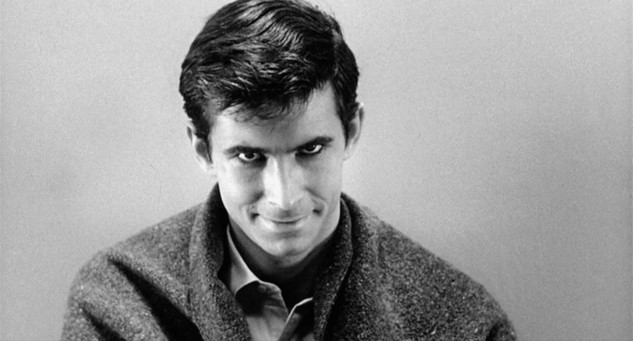
The character of Norman Bates is one of cinema’s great, empathetic bogeymen, a quality that makes him perpetually fascinating in Alfred Hitchcock’s seminal 1960 thriller. The easygoing, conversational tone and almost boyish charm of Anthony Perkins while conversing with Marion Crane over sandwiches in the parlor engenders a great degree of sympathy for poor Norman, even after it becomes clear that he’s probably the one carving up interlopers at the Bates Motel. A jaded horror fan would no doubt expect the sequels to such a classic to be exploitative claptrap, but Perkins had too much respect for the character to let that happen. He imbues Norman with more empathetic humanity in Psycho II, even as the audience is essentially rooting for the character to lose his mind once again, and then goes even further off the deep end in Psycho III, which he also directed. The made-for-TV Psycho IV: The Beginning, meanwhile, struggles somewhat with the existential load of whether audiences truly care to see how Norman first dispatched his mother, but at least it has more original thoughts to offer than Gus Van Sant’s much-maligned, shot-for-shot remake in 1998. Is the remake really that terrible? To be honest, no—it’s an obviously very faithful retread, albeit with a lesser cast. But Van Sant will never be able to justify why he bothered in the first place.
16. The Exorcist
First entry: The Exorcist (1973)
Latest entry: Dominion: Prequel to the Exorcist (2005)
Total entries: 5

God, is this one hard to rank. Exactly how much credit should The Exorcist get as a franchise for the fact that the original is often cited as the consensus greatest horror film of all time? How do you grapple with weighing the kooky The Exorcist II: The Heretic and lame prequels such as Exorcist: The Beginning against the original and the disjointed (but often effective) The Exorcist III? Few horror series seesaw and veer as wildly in terms of quality as this one. You obviously don’t have to make an argument for the transgressive impact of the original Exorcist—people were vomiting in terror in the aisles of their theaters, and that speaks loudly enough. If all four of the sequels had been as messy as The Heretic, though, it might have been difficult to justify a top 20 placement even with the strength of the original. The assist here comes from the always overlooked Exorcist III, the soft-spoken but intensely creepy middle child of the series. Watching the film today, it’s clear that Exorcist III never quite came together as intended, but that doesn’t stop it from being scary as hell when it wants to be.
15. The Fly
First entry: The Fly (1958)
Latest entry: The Fly II (1989)
Total entries: 5
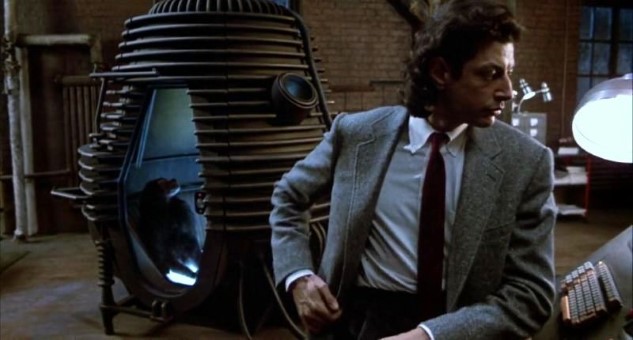
It’s pretty likely that only the horror geeks in the house would even be aware that there were five films in The Fly series, but unsurprisingly, it’s the ones you know about that factor most heavily into this ranking. The Fly franchise holds the distinction of having produced two different classics, which is something that a lot of others on this list can’t claim. The original Fly is a charming sci-fi flick that mostly functions as a mystery, benefitting from the candor of Vincent Price in one of his more down-to-earth roles. The David Cronenberg remake, on the other hand, surpasses the original in most every way, from the animal magnetism of Jeff Goldblum at his best to some of the ickiest, slimiest practical FX in the history of the genre. The sequel to that film, 1989’s The Fly II keeps the gore but loses out on Cronenberg’s unique eye for what is unsettling, which is a shame. Still, The Fly franchise can offer two iconic films that each do a great job of representing the state of the genre in different decades.
14. Jaws
First entry: Jaws (1975)
Latest entry: Jaws: The Revenge (1987)
Total entries: 4

The biggest advantage possessed by Jaws as franchise is that there’s ultimately only four entries—so even with the unbelievably terrible dead weight of Jaws: The Revenge (this time, it’s personal!), the greatness of the original counts a bit more strongly than it does for say, The Exorcist. Make no mistake, Spielberg’s Jaws is a great film, with timeless characters and an irrepressible spirit of adventure that is egged on throughout by John Williams’ score, which is much more than just the famous “Jaws theme.” Likewise, Jaws 2 isn’t half bad, helped by the returning Roy Scheider and kills that upped the ante for the genre, even if it can’t help but being rather repetitive. But still, you get to watch a shark destroy a helicopter, so there’s that. It’s Jaws 3-D where things obviously start to fall apart and become hopelessly threadbare, and The Revenge where they lapse into total absurdity, but thankfully the great half of this franchise doesn’t have that hard a time outweighing its tired ’80s installments.
13. “Hannibal Lecter” series
First entry: Manhunter (1986)
Latest entry: Hannibal Rising
Total entries: 5
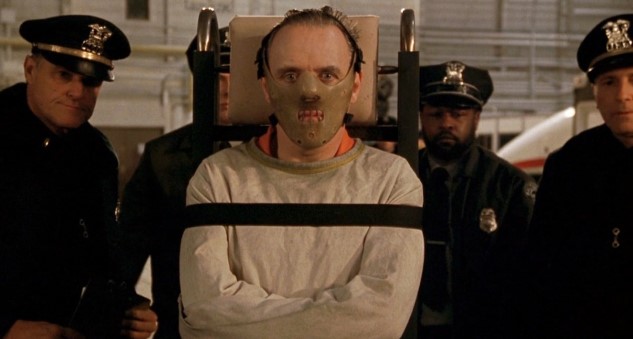
Finally, the rare franchise on this list where the first entry isn’t the best known of the series. For these films, we’re including all five of the series linked by the presence of “Hannibal the Cannibal” as a character, which gets off to a strong start in Manhunter before delivering an all-time thriller in the form of Silence of the Lambs, the film that made Hannibal one of the most impersonated film characters of all time. The next two entries, Hannibal and Red Dragon, each have their moments, but lack the stylishness that Jonathan Demme brought to the screen in Silence—nor can Anthony Hopkins quite rekindle the same presence he had as Lecter, perhaps because the doctor has considerably more screen time. Either way, this is a series with four films that fall in the “adequate” to “great” range, with only one outright disaster in the form of Hannibal Rising, which sought to once again rob a classic character of any mystique he might still have been retaining. Without Rising, this probably could have been top 10 material.
12. The Conjuring universe
First entry: The Conjuring (2013)
Latest entry: The Nun (2018)
Total entries: 5
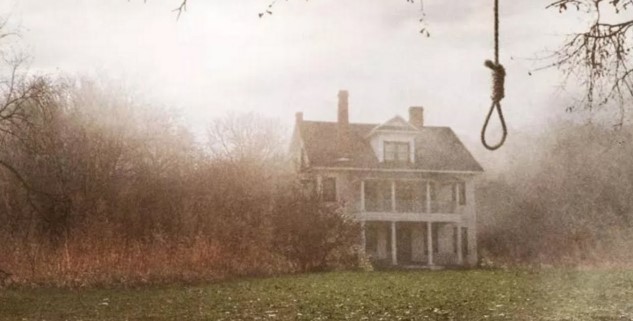
No series on this list will probably require the entire article to be revised as often as The Conjuring, which currently has five entries but three more in production—one for Annabelle, one for The Crooked Man and one more for The Conjuring itself. Regardless, this series has earned its place as James Wan’s best overall horror franchise to date, getting by on sheer stylishness and scariness. When The Conjuring hit theaters in 2013, many wondered why exactly the film had been hit with an “R” rating when it doesn’t seemingly have the violence or sexual content necessary to earn it, but the reality is that Wan’s first haunted house yarn was simply too scary to deny—a perfectly executed modern rendition of something akin to Poltergeist, with a twist of The Exorcist for good measure. The sequels have been plentiful but haven’t watered down the potency of the series too much—The Conjuring 2 was more of the same (in a good way), while the Annabelle series produced 2017’s surprisingly chilling Annabelle: Creation. Only The Nun lowers the series batting average by a bit, but overall it stands as probably the most dependable modern horror franchise.
11. Child’s Play
First entry: Child’s Play (1988)
Latest entry: Cult of Chucky (2017)
Total entries: 7
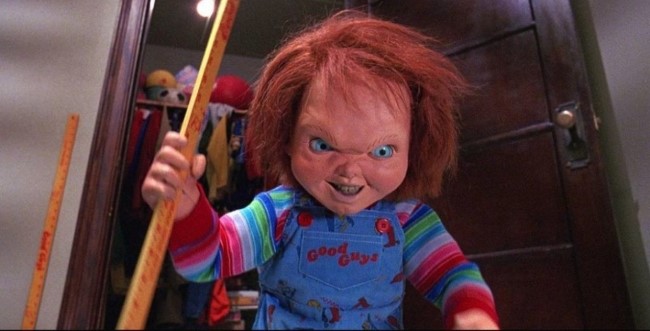
I can feel some eyes rolling already on this one, but let me make my case. Are there some pretty rotten entries in the Child’s Play franchise? Sure. Seed of Chucky is a cheesy mess, and I’ve never been a fan of Child’s Play 3 in particular, but the seven films of this series can also boast the most committed central performance in a horror series outside of A Nightmare on Elm Street’s Robert Englund. I’m talking of course about the wonderful Brad Dourif as Chucky. He’s the heart and soul of these movies; a voice that is so iconic and irreplaceable in the series that it’s almost impossible to imagine them without him. He brings a very specific type of characterization to Chucky, which falls somewhere between glee, mania and self-aggrandizing delusion. Many horror fans probably fell out of familiarity with the series after Bride of Chucky and Seed of Chucky seemed to spell their doom as a commercially profitable enterprise, but it’s seen an unlikely resurgence in this decade with Curse of Chucky and especially the surprisingly effective Cult of Chucky in 2017. All in all, Child’s Play is in a better place now as a franchise than it has been at any point since 1990, although the upcoming reboot (without Brad Dourif???) might quash that unlikely comeback story.
10. Hammer Dracula series
First entry: Horror of Dracula (1958)
Latest entry: The Legend of the Seven Golden Vampires (1974)
Total entries: 9
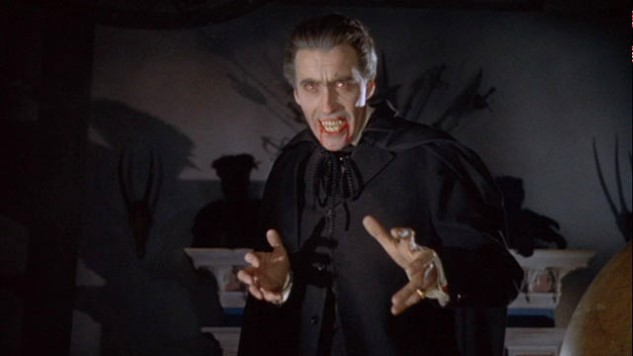
What a wild, uneven ride these films had over the course of 16 years. The British revivals of Universal’s classic movie monsters were infused (at least in the beginning) with the sheen of high-class production values, lavish sets and crimson blood in glorious Technicolor, setting them apart from the monster films that had come before. In the earliest Hammer Dracula installments this meant a return to stately gothic grandeur, as seen in Horror of Dracula and Dracula: Prince of Darkness. In subsequent films, the sense of gravitas began to wane as Hammer explored the more titillating side of the horror genre in an effort to keep up with their American rivals. But still through it all there was Christopher Lee as a uniquely physical and animalistic take on Dracula—a commanding 6’5’’ specimen, he spoke largely through expression and movement, rather than dialog. This Dracula isn’t Bela Lugosi’s charmer—he’s a wild-eyed vampire who’s ready to sprint up and rip your throat out. The series eventually falls victim to diminishing returns, as anyone who has sat through Dracula A.D. 1972 or The Satanic Rites of Dracula would attest, but at least five or six of the entries are good enough to be yearly classics. And to top it all off, you get one final, bizarre entry in the form of The Legend of the Seven Golden Vampires, a Hammer collaboration with Hong Kong’s Shaw Brothers, which fused Dracula with chopsocky martial arts. If you’re looking for a bizarre Halloween party movie, this one is A+ material.
9. Hammer Frankenstein series
First entry: The Curse of Frankenstein (1957)
Latest entry: Frankenstein and the Monster From Hell (1974)
Total entries: 7
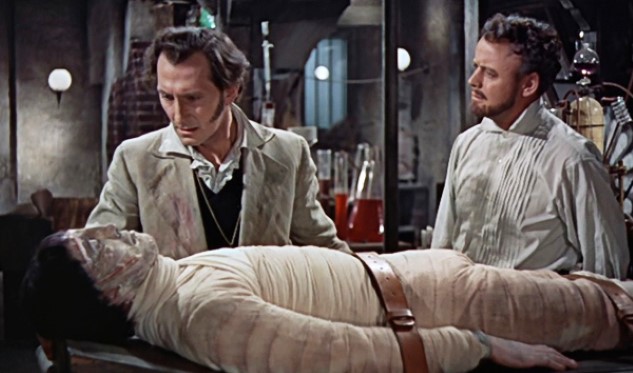
Edging out the Hammer Dracula films is the series that put Hammer on the map in the first place, its neo-gothic treatment of Mary Shelley’s Frankenstein. The genius of this series was in its reexamination of the roles played by doctor and monster. Whereas Boris Karloff’s creature is a figure of sympathy and prejudice, who is only driven to kill by accident or because he’s manipulated by others, the Hammer Frankenstein films instead put the focus on the doctor himself, casting Frankenstein as a caddish anti-hero whose drive for discovery gradually strips him of his humanity. Like the Dracula series, they begin with stately gothic horror in Curse of Frankenstein and The Revenge of Frankenstein, before becoming more explicit and socially conscious in films such as Frankenstein Created Women and the wonderfully titled Frankenstein Must Be Destroyed. Peter Cushing is the straw that stirs the drink, bringing a unique combination of charm and imperious self-confidence to the role, always certain that his next experiment will be the one that justifies his work. Jeffrey Combs’ unhinged mad scientist Dr. Herbert West in Re-Animator owes a lot to this particular Frankenstein.
8. Scream
First entry: Scream (1996)
Latest entry: Scream 4 (2011)
Total entries: 4
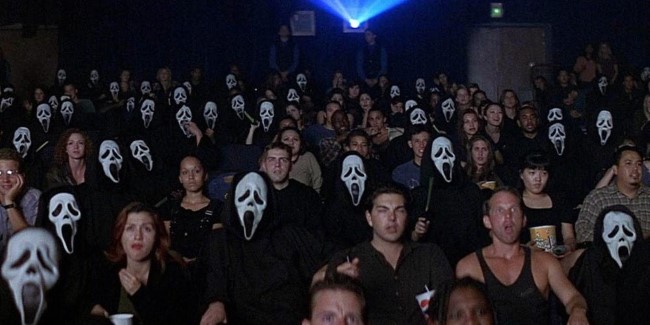
When there are new entries in the Halloween franchise making bank at the box office in 2018, it’s easy to forget just how dead “slashers” were as a genre by the time the mid ’90s rolled around. Make no mistake, the late ’80s and early ’90s had absolutely run the entire sub-genre into the ground via both repetition and extrapolation, to the point that proper slashers almost went the way of the dodo. And then came Scream, Wes Craven’s subversive meta-analysis of the genre he helped expand via A Nightmare on Elm Street, giving the entire horror genre a much-needed shot in the arm. Crackling with wit and verve, Scream was a paean to everything Craven loved in filmmaking, and was almost matched by the excellent examination of film sequels that is Scream 2. The fact that the director made a sequel on par with the original is certainly among his more impressive accolades. Alas, the series eventually drifted into diminishing returns in Scream 3 and Scream 4, but they at least retained Craven’s auteur touch behind the camera, and writer Kevin Williamson returned to give the series a proper send-off in Scream 4. There are a few blemishes here, but they’re pretty easy to overlook in retrospect.
7. Alien
First entry: Alien (1979)
Latest entry: Alien: Covenant (2017)
Total entries: 8
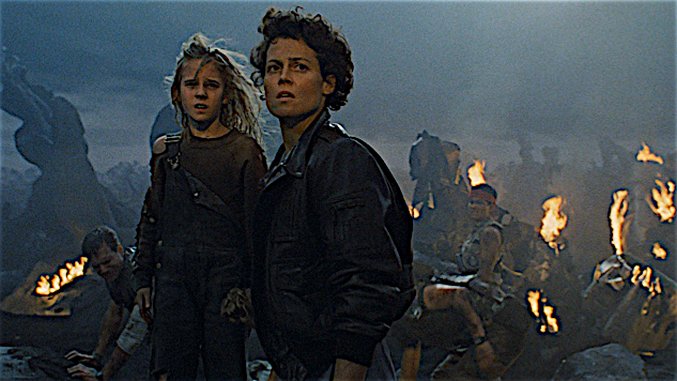
Once again, we’re including the Alien vs. Predator films here in the total, just as we did for Predator as a franchise. The difference is that Alien can boast the superior original installments, whether it’s the claustrophobic grittiness of the original Alien or the razzle dazzle action of James Cameron’s Aliens. Most fans would even recognize that the divisive Alien 3 certainly has its merits, as does almost every entry in the series—even Resurrection, which at least has an insane Brad Dourif to its credit. Still, the series greatest achievement is the way it effortlessly transitions genres between the first two installments, from one of the crowning works of sci-fi paranoia and body horror into one of the best sci-fi action-horror amalgamations of all time, while still retaining a cohesive, satisfying story for Ellen Ripley. Of course, we also have to address Ridley Scott’s modern, Alien-tangential films, Prometheus and Alien: Covenant. The former was perhaps overly ambitious, an attempt at telling a navel-gazing science fiction story about the origin of the species to an audience that wanted xenomorph action. The latter was an overreaction, delivering exactly what the former lacked. Both are, at the very least, perfectly competent, big budget sci-fi spectacles, so neither can hurt the overall ranking of the Alien franchise by much.
6. Halloween
First entry: Halloween (1978)
Latest entry: Halloween (2018)
Total entries: 11
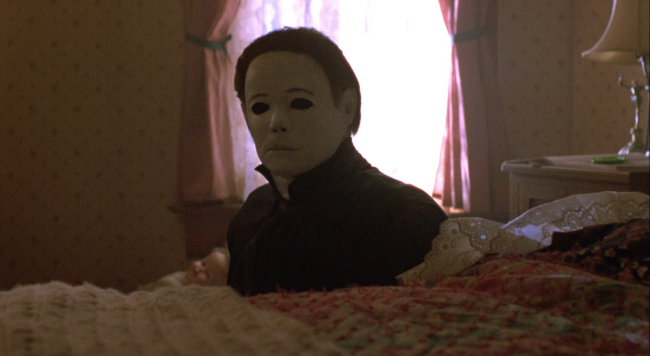
Alright, now we’re certainly into the big guns, eh? Of the “big three” slasher franchises, it’s easy to make the case that Halloween has the most iconic and enduring of original installments. A Nightmare on Elm Street might give it a run for its money, but Craven’s film was made 6 years later, heavily informed by the landscape that Halloween helped shape. Suffice to say, it had advantages that Carpenter’s film never had. 1978’s Halloween remains a minimalist masterpiece. However. Of the big three slasher franchises, Halloween’s sequels are the most variable and scattershot in terms of both quality and focus. Even the direct follow-up, 1981’s Halloween II, is badly lacking in comparison with the original, although I personally prefer the atmosphere of the underrated Halloween 4—most likely underrated because it’s tied at the hip to the considerably weaker Halloween 5 and the intensely confusing Halloween 6. And then there are the real dregs, from Halloween: Resurrection to Rob Zombie’s two cracks at the franchise. Ultimately, even with a solid (though frustrating) new installment in 2018, the average strength of each entry in the Halloween franchise can’t quite measure up to the baseline of its biggest competitors.
5. Friday the 13th
First entry: Friday the 13th (1980)
Latest entry: Friday the 13th (2009)
Total entries: 12
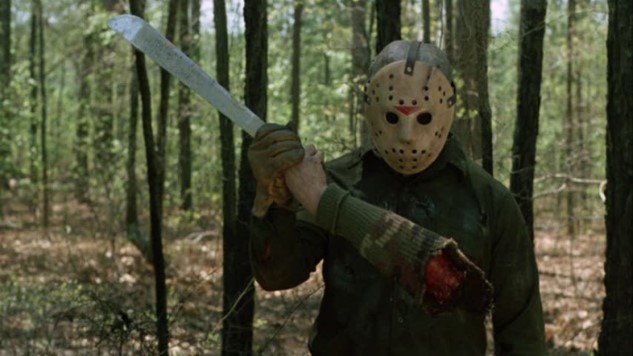
When I say “biggest competitors” in the last entry, this is obviously one of the series I’m talking about. What Friday the 13th lacks in virtuosity and singularly great entries, it makes up for with stolid consistency and tighter franchise cohesion, in comparison with Halloween. Is there any single Friday the 13th entry that can match 1978’s Halloween? Certainly not, but the average quality level of Friday the 13th entries was considerably higher, six or seven movies in, than the comparable films in Halloween’s franchise. In fact, Friday the 13th enjoys two of its best entries in Part VI: Jason Lives and Part VII: The New Blood. Make no mistake, watching the slow transition of Jason from “guy with a bag on his head” in Part 2 to “indestructible golem” in Part VI is an extremely satisfying (and entertaining) ride. Of course, Friday the 13th couldn’t quite keep it up forever. Jason Takes Manhattan and Jason Goes to Hell are both considerably weaker entries in the series canon, but there are aspects of meta parody in Jason X and then Freddy vs. Jason that helped reclaim some of the series dignity. Even the straight reboot in 2009 was perhaps better than critics and fans gave it credit for at the time; a legitimate effort to make yet another uncluttered Friday. That’s ultimately the beauty of this series—as long as people still want to watch teens get butchered, there’s always a place for it. Here’s hoping that the ongoing legal battle over the series rights eventually results in a new entry, even if it is one produced by Lebron James.
4. Evil Dead
First entry: The Evil Dead (1981)
Latest entry: Evil Dead (2013)
Total entries: 4

There are four Evil Dead movies, and not a bad one in the bunch, making for a franchise that is in this position thanks to individual quality over a massive resume. Granted, the majority of the franchise strength comes from the first three entries anchored by living legend Bruce Campbell as the infinitely quotable Ash Williams, one of horror’s greatest solo performers. The stretches of Evil Dead II in particular that Ash spends alone in the cabin, going slowly mad as the world around him melts away, are some of the most manic and delightful in horror history. His character is fascinating for just how much he changes and morphs from start to finish—from an almost nebbish everyman in the first film, to a wisecracking, cynical, embittered jokester in the much more comedic Army of Darkness. There are surely some who would object to including the 2013 remake of Evil Dead in the same tier as any of the preceding films, but just because it doesn’t exactly ape Sam Raimi’s style, doesn’t mean it can’t work perfectly well in its own way. Fede Álvarez’s film is a teeth-gritting descent into ultraviolent, gory mayhem that more than justifies the Evil Dead title, while reclaiming some of the attitude present in Raimi’s 1981 original. All four entries in the series are quality films, but the series as a whole also possesses the advantage of being able to cater to different tastes. It’s safe to say, then, that Evil Dead is probably the best four-film franchise in horror history.
3. Universal Frankenstein series
First entry: Frankenstein (1931)
Latest entry: Abbott and Costello Meet Frankenstein (1948)
Total entries: 8
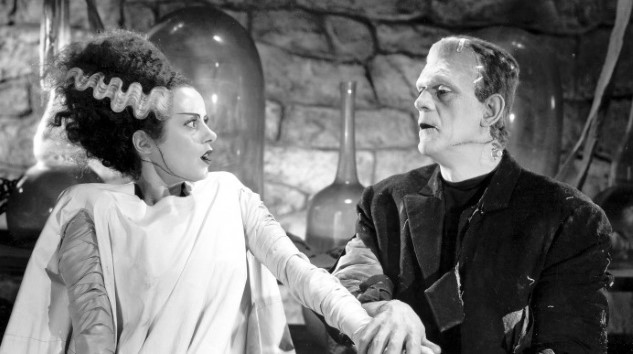
Dracula may have gotten the ball rolling, but Frankenstein is undeniably the crown jewel of the original Universal monster franchises, having both the best solo films and the best crossover films of the series. There’s simply so much pathos in the eyes of the Monster, lovingly played through the first three entries by Boris Karloff, that installments in the Frankenstein series have an emotional depth not seen in any of the other monster franchises. That, and it’s the rare series that actually gets better as it goes, at least for a while. You’ve probably heard someone opine that Bride of Frankenstein is even better than the original, right? Well here’s something you don’t hear as often: Son of Frankenstein is even better than the more famous Bride! It’s perhaps the ultimate synthesis of the golden age of Universal horror, from Basil Rathbone as the inquisitive “Wolf Von Frankenstein,” to Bela Lugosi as the malevolent (and possibly undead?) “Ygor,” to Karloff as the pitiable creature. After Son of Frankenstein, the series chalks up another solid entry in Ghost of Frankenstein before embarking on a series of crossovers, Frankenstein Meets the Wolf Man being the highlight. Yes, this series contains the same weakest links as the Universal Dracula series, but when your library also includes Bride of Frankenstein and Son of Frankenstein, you get a lot more slack. If you’ve never watched any of the old-school Universal monster movies, do yourself a favor and queue up a night-long binge of the first three Frankenstein installments. You won’t regret it.
2. A Nightmare on Elm Street
First entry: A Nightmare on Elm Street (1984)
Latest entry: A Nightmare on Elm Street (2010)
Total entries: 9
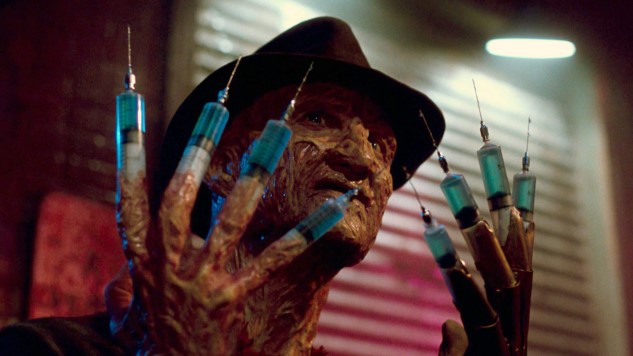
When it comes to slasher kingpins, there can be only one man of our dreams, and his name is Freddy Krueger. What makes A Nightmare on Elm Street the greatest franchise material of the big three slasher series? There’s a handful of answers, but the most important is a single name: Robert Englund. Suffice to say, the greatest strength of Nightmare is that the series is ultimately structured around the most dependably charismatic and downright entertaining of all horror film antagonists, and even in its weakest moments, Nightmare can always fall back on Englund as its trump card—excepting the admittedly ineffective reboot with Jackie Earle Haley. The fact that Englund plays the same character through eight films, though, is an advantage that Halloween or Friday the 13th can’t share, and the audience feels a deeper connection to Krueger the character as a result. He can be frightening; he can be funny; he can do whatever is required of him in any given film. Freddy, his powers, and his dream world represent a license for screenwriters and production designers to go nuts and explore the boundaries of their imagination. It stands to reason, then, that Nightmare would need a superior “final girl” to act as nemesis to Freddy, and the series has that in the form of Nancy Thompson. More so than any of her contemporaries, even Laurie Strode in Halloween, Nancy manages to both fit the archetype and expand it. The entries in the series in which she appears are the three best Nightmare films, and that’s no coincidence—first the original, then Nightmare 3: Dream Warriors and finally Wes Craven’s New Nightmare, wherein the series’ original director returned to upend a format that was in danger of growing stale. In particular, New Nightmare was exactly the film that the franchise needed at that moment in 1994; a palate-cleansing reconstruction of everything that made the series work in the first place, from the man who conceived it. You’re not going to find a better seventh installment of a horror franchise on this list.
1. George Romero’s “Of The Dead” Series
First entry: Night of the Living Dead (1968)
Latest entry: Survival of the Dead (2009)
Total entries: 6
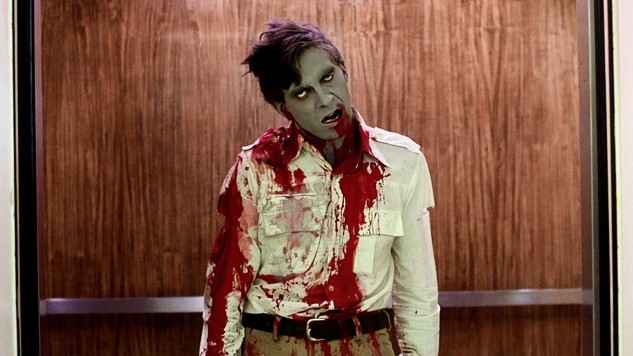
For all his genius, George A. Romero couldn’t make the claim that every zombie film he ever directed deserved to be hailed as a classic. Both Diary of the Dead and Survival of the Dead somewhat struggled to justify their existences, retreading the same themes of humanity and social satire that have been central to Romero’s career. But when you’re the creator of arguably the three best zombie films of all time—Night, Dawn and Day of the Dead—then you’ve already created a legacy that most writer-directors will never be able to approach. It’s perhaps the best trilogy of films in horror history, and it’s the strength of those films that cement Romero’s zombie epics in the #1 spot. What more is there to write, in terms of the lasting impact of Night of the Living Dead on the horror genre and pop culture? We wouldn’t have the modern conception of the zombie without it. No The Walking Dead, that’s for certain. No 28 Days Later, or Shaun of the Dead, or Zombieland, or Train to Busan. It is the ancestor to more children than one could possibly count. Dawn of the Dead and Day of the Dead, meanwhile, took Romero’s skill as a satirist to its zenith, painting broad critiques of everything from consumer culture and 1970s racial tensions to toxic masculinity and gender norms, even as Tom Savini simultaneously pioneered new methods to make zombie heads explode on film. Rarely has any series committed itself so fully to both introspection and gratuitous titillation, all at once. And ultimately, even Diary of the Dead and Survival of the Dead are more effective than your average, run-of-the mill zombie imitation. Romero never truly lost his edge—he just helped the rest of the world catch up to where he already was. Nor is this series ever truly dead. With long-gestating follow-ups such as Road of the Dead and Rise of the Living Dead apparently still somewhere on the horizon, it may not be long before the dead rise once again.
Jim Vorel is a Paste staff writer and resident horror geek. You can follow him on Twitter for more film writing.